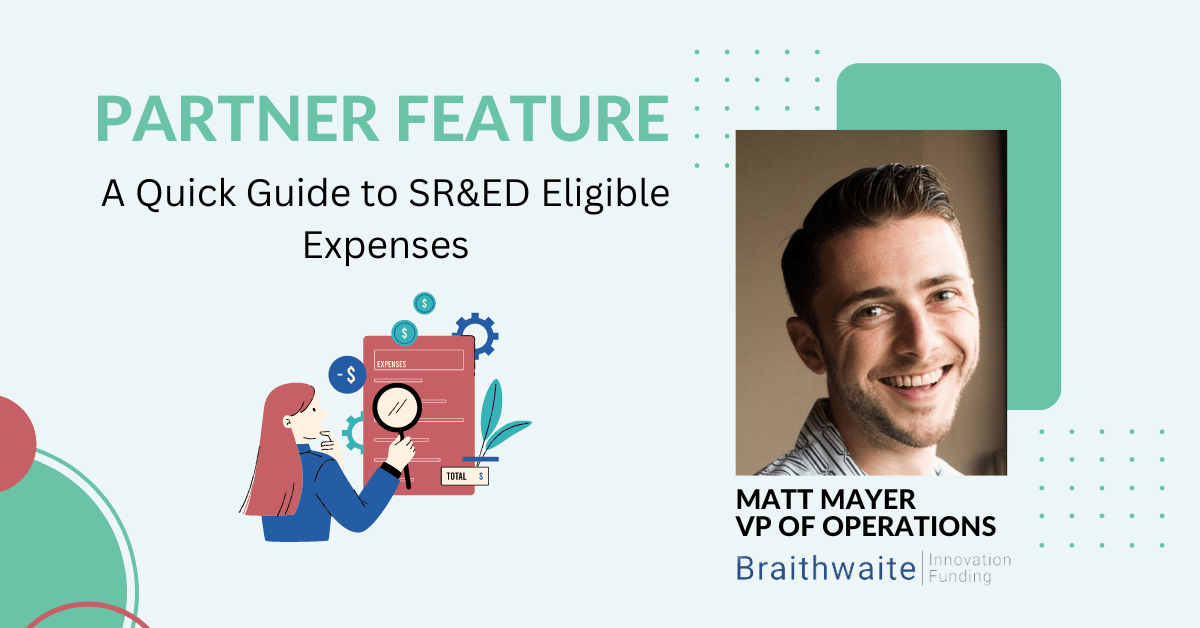As 2024 takes shape, businesses across Canada eagerly await news about the Federal government’s proposed Clean Tech, Clean Hydrogen, and Carbon Capture, Utilization, and Storage (CCUS) tax credits. As of August 4, 2023, the government has introduced draft legislation and is finalizing details for the official implementation of the incentive programs.
Below, we’ll review the previously announced details and the benefits of complementing your clean tech tax credits with additional support through programs like the Scientific Research and Experimental Development (SR&ED) tax credit program.
What’s the Rundown on Canada’s Clean Energy Initiatives?
In 2022, the Canadian government took a strong stance on advancing the nation’s position as a global leader in the clean tech sector. In a bid to incentivize the use and development of clean technology, prospective Clean Tech, Clean Hydrogen, and CCUS tax credit programs were announced, with program-specific details evolving slightly over time. As of August, current draft proposals include:
- the Clean Technology Investment Tax Credit (Clean Technology Credit);
- the Carbon Capture, Utilization and Storage (CCUS) investment tax credit (CCUS Tax Credit);
- a Corporate Tax Rate Reduction for zero-emission technology manufacturers
These new tax credits intend to offer a substantial financial incentive, with tax credits of up to 30% for businesses investing in environmental assets like clean electricity generation (wind, solar, small hydropower, and small nuclear reactors) as well as stationary electric storage. The Hydrogen credit offers a potential tax credit of up to 40%. The CCUS ITC will offer a refundable ITC of up to 60% on capture equipment using direct ambient air, 50% on other capture equipment, and 37.5% on qualified carbon transportation, storage or usage equipment. The CCUS ITC has proposed to offer a refundable ITC of up to 60% on capture equipment using direct ambient air, 50% on other capture equipment, and 37.5% on qualified carbon transportation, storage or usage equipment.
Qualification Standards
While eligibility criteria for the upcoming clean energy initiatives have yet to be officially finalized, the anticipated requirements are as follows:
Net-Zero Compatibility and Competitive Prowess
Applicants whose work focuses on adhering to Canada’s net zero by 2050 are likely to receive a higher return. Those willing to invest more upfront in integrating and implementing clean tech initiatives are also likely to benefit considerably from the programs as they are designed to help offset expenses and make renewable alternatives more attainable in the long run through dedicated financial support for onboarding.
Applicants should also expect to be evaluated on how their project helps boost the Canadian economy and establish competitive dominance internationally. Those whose approach establishes a clear advantage are most likely to benefit from the full scope of the program. In contrast, those who adopt smaller measures may receive less incentives in return.
Leveraging Government Incentives
While Canadians are still waiting for finalized details about the government’s clean tech, hydrogen, and carbon tax credits, it’s crucial to be aware of other federal and provincial incentives that can help fund your work. Early adopters of clean energy initiatives often intersect with research and development (R&D) and experimental development projects, which (depending on certain eligibility factors) may make them prime candidates for the Scientific Research and Experimental Development (SR&ED) program. SR&ED is the federal government’s largest source of R&D funding, distributing over $3 billion to approximately 20,000 claimants annually. SR&ED is a particularly valuable avenue for innovative businesses to explore due to its non-dilutive nature.
Learn more about the SR&ED program here.
The one caveat to be aware of when filing an SR&ED claim (and many other government initiatives) is that it typically takes a considerable amount of time to receive your refund. Without an additional financing option ready to help you cover the gap between filing and actually receiving your funds, many R&D businesses find themselves facing tight deadlines that can lead to production stoppages and other inconveniences.
Financing your earned SR&ED credits with a trusted lending partner like Venbridge is one of the best ways to overcome this gap and ensure you have upfront capital when it matters most. With Venbridge’s SR&ED financing, you can access the funds you need to pursue R&D throughout the year with minimal hassle or delays.
Need help estimating your refund? Check out our SR&ED calculator!
With programs like Clean Technology, Clean Hydrogen, and CCUS tax credits on the horizon and the SR&ED program acting as a long-standing source of funding, Canadian businesses have a wide array of opportunities to grow and innovate while contributing to a greener and more sustainable future.
Venbridge is here to support your innovation by providing the capital you need to bridge the gap between your R&D expenditures and government refunds.
Contact our team today to learn more about the role of SR&ED financing in your company’s capital mix and how we can help you navigate the world of government incentives.




